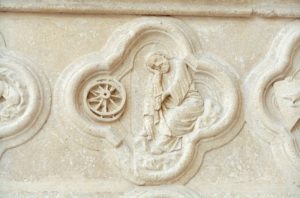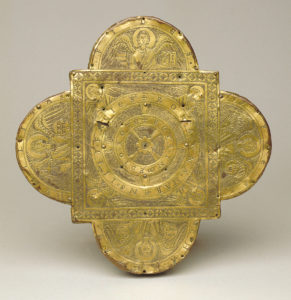Véronique Rouchon, Université Lumière Lyon 2


The graphic model of the wheel was used by the Catholic Church, after Pope Gregory the Great (around 600), to illustrate the concordance between the Old and New Testaments: « quasi sit rota in medio rotae ».
This formula was elaborated from the commentary of a passage of the Scriptures, the beginning of the book of the prophet Ezekiel, known as the Vision of the Lord’s chariot, which is a model of the visionary genre.
At the same time, it has inspired important medieval commentaries of biblical exegesis. The figure of the wheels seen by Ezekiel became a reference used throughout the Middle Ages, with the aim to translate all interpretive activity, and more broadly all thought activity.


By the perfection of its roundness and the multiplicity of its movements, the wheel appears as an universal hermeneutic machine, which goes far beyond the domain of the sacred texts that gave it birth, and has to be combined with intellectual knowledge. It is not easy to understand what people called ‘cognition’ in the Middle Ages, but it is certain that the rota fully provided them with a graphic model of the intelligence of things.

